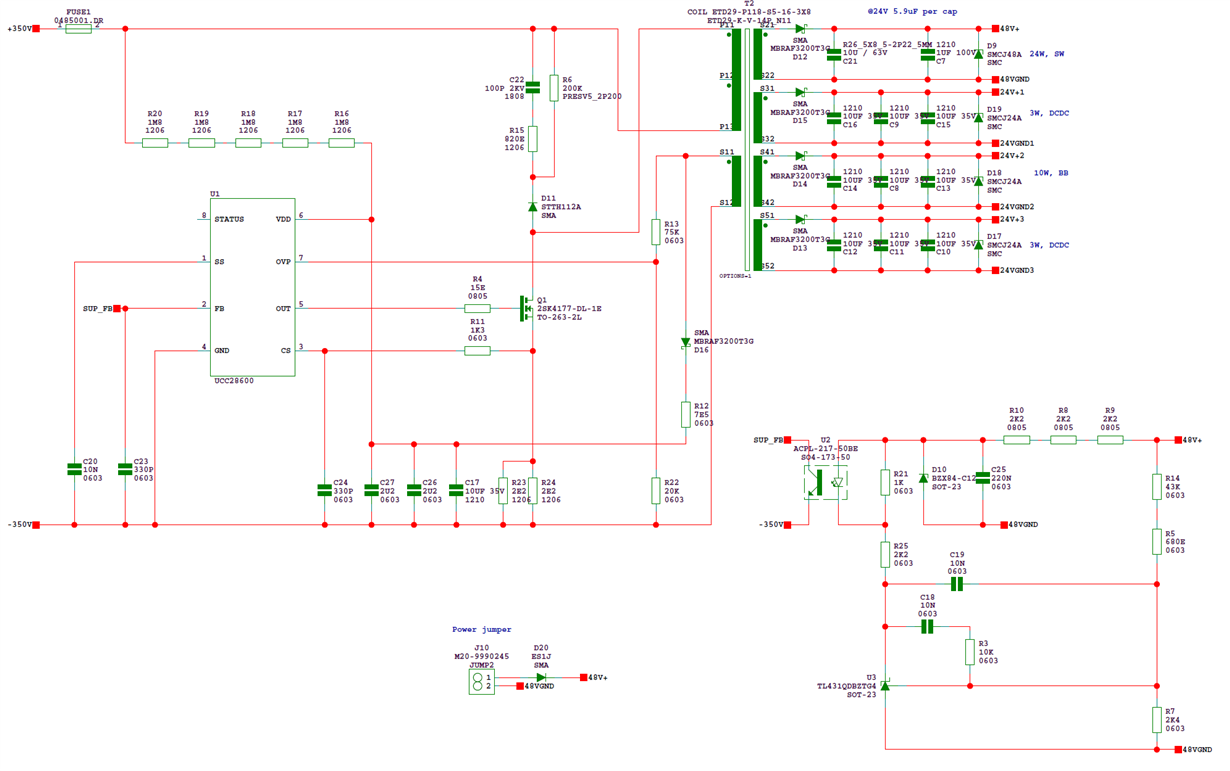It would seem normal that the output cannot be maintained when the input voltage drops. However I have the problem that the controller keeps switching and actually increases the output voltage uncontrollably.
The power supply is designed for an input voltage of 320-780VDC and an output of 48V 40W.
The issue occurs when the input voltage drops underneath 150V and with no load on the output. The compensation network pulls the FB pin to approximately 0.1V. the aux supply voltage rises from 15V to 20V at this point, but the gate voltage drops to about 5V. It keeps switching and the mosfet becomes incredibly hot within seconds.
I am at a loss here, it would seem that something is wrong with the controlchip (as it keeps switching with 0v feedback and gate voltage does not match the supply voltage) But I have the same problem after replacing the chip.
At 350V it works perfectly.
Could this be an EMI problem?



